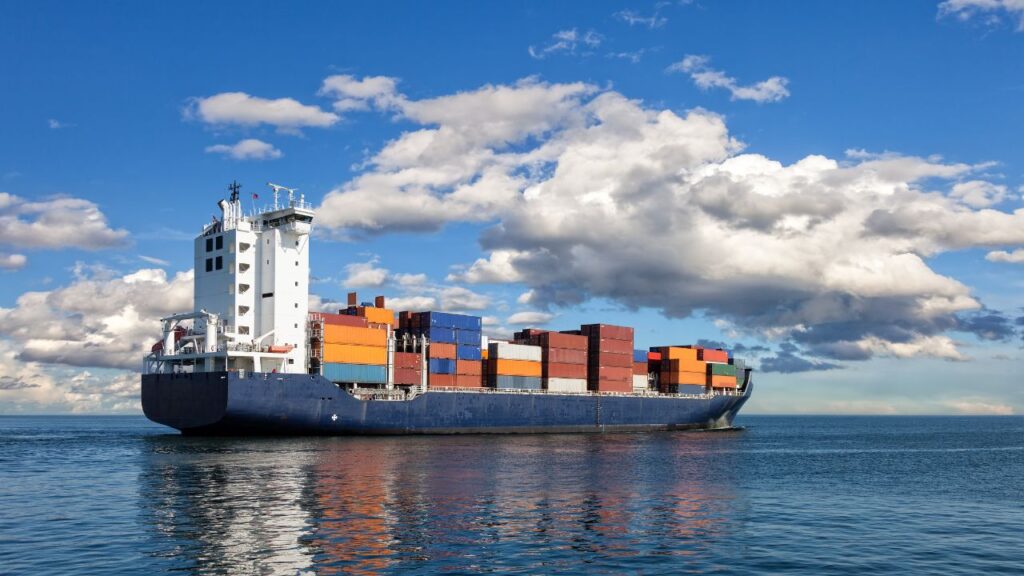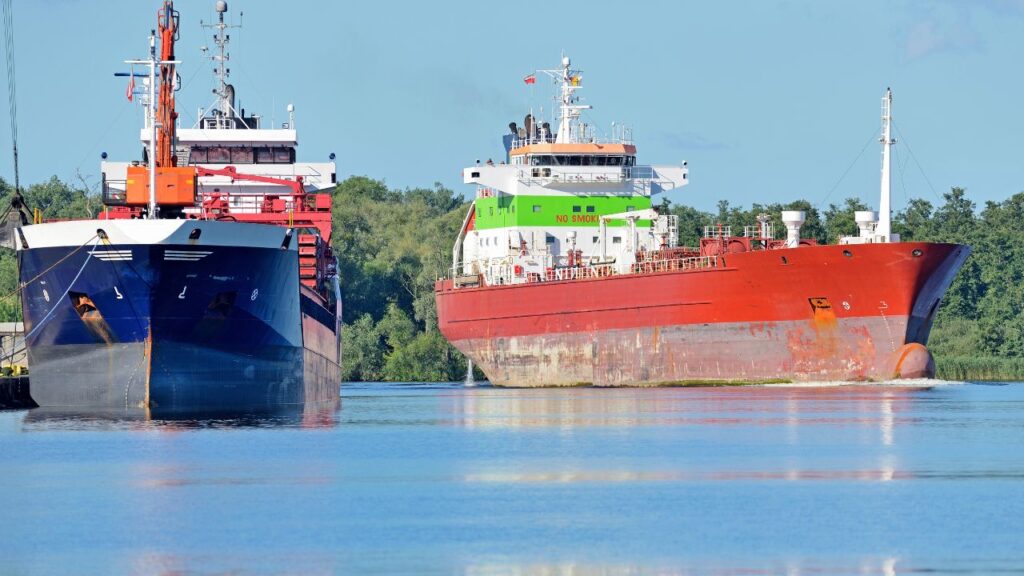Did you know that there are numerous shipping routes from China to the US and several routes to pick from various major ports to different situations?
This guide will tell you everything you should know about the major shipping routes to help you streamline your world trade endeavor. Without further ado, let’s dive in!
What Are Cargo Shipping Routes and How Are They Essential in Business?

Remember that cargo shipping routes are essential in trade and business. Shipping routes are sea roads and lanes utilized to navigate merchant's vessels.
Ocean vessels navigate through the water like trucks using roads and highways. Those shipping routes from China to the USA help businesses ship their freight globally. Those shipping routes are utilized for global trade, and it is one of the cheapest ways of shipping freights globally.
On top of that, shipping routes are the paths that ocean vessels and ships use across the oceans. They’re pre-determined channels defined within the context of physical geopolitical constraints.
The physical constraints can involve current speed, the presence of reefs, and depth.
Shipping routes are pathways in the ocean taken by ships to send cargo from one place to another. Merchant sea vessels send goods from one country to another.
Also, shipping routes are pre-determined, and the impact of prevailing currents and winds is considered for such fixed pre-determined routes.
Shipping routes normally connect consumption and production areas. China is also considered one of the major exporters in global trade. A few leading exporters include the United States, Europe, and Japan. Ningbo Zhoustan is a Chinese port known as one of the world's most significant global shipping routes.
On top of that, China has eleven of the globe’s fifteen busiest shipping routes.
How Does Freight Shipping Work?

International trade is coordinated through different shipping lanes across the globe. IMO found that at least ninety percent of freight travel globally by sea shipping. Nonetheless, rail transport, ground, and air cargo are also crucial transportation methods.
Shipping lanes are considered the foundation of the shipping industry. Others are more popular and congested depending on the trade routes they’re associated with.
Whether conducting a global trade or having concerns about the international freight industry, you have come to the ideal place.
Billions of goods are shipped throughout the world trade every year by big ships. The world’s economy is reliant on such boats, making it from the port on the port on time, with engineered shipping lines made for those massive ships to make their way.
What Are the Types of Maritime Routes?

You’ll find numerous shipping networks. These major shipping routes are designed and structured based on the commercial service type.
Major types of sea routes are:
· Multi-Ranges
They have two categories: the pendulum route and round-the-world services. The latter refers to services that call a sequence of ports in both directions. Meanwhile, the pendulum route involves a maritime service covering three ranges. It entails a line of ports in South Asia, East Asia, and Europe.
· Inter-Range
This route involves a regular itinerary of the sequence of ports. Some major poles in the global economy, like North America, East Asia, and Western Europe, have inter-range ports.
· Port-to-Port
This route is utilized to send raw materials such as petroleum and oil, products grain, and minerals, among other things. It normally represents transmission between main consumption markets and extraction zones.
On top of that, it involves less regular service between two cargo ports moving back and freight flows.
What are the Major Commercial Shipping Routes for Global Trade?

Shipping lanes are one of the crucial contributions to global trade. You will find many natural and man-made shipping trade routes.
Some of them are the busiest shipping routes, and the rest as they facilitate their trade routes. Here are some of the busiest shipping routes:
· The English Channel (between France and the UK)
The busiest maritime routes in the world connect the North Sea and the Atlantic Sea. Over 500 large ships pass through this channel on a daily basis. It also has the world’s busiest shipping lane: Dover’s Strait.
· The Danish Straits (Sweden, Germany, and Denmark)
These important global trade routes connect major ports, including the Baltic Sea and the North Sea, and are composed of three channels: the Little Belt, the Great Belt, and the Øresund. These are crucial points of transit for trade in Europe and Russia.
The shipping industry fulfills numerous global trade requirements for fuel, finished goods, processed products, automobiles, spices, and grains, among other things.
· The Suez Canal (close to Egypt)
The shortest route between the Indian Ocean and the Atlantic Ocean is through the Red Sea. The canal also cuts the twenty-four-day transit time to only 24 hours. It’s one of the most used and complex ocean lanes, with over 100 ships passing regularly.
Keep in mind that this canal is extremely narrow, that it can’t control 2-way traffic, and the wait time for the vessels could be about a week.
· The Panama Canal (in the United States)
Considered an artificial seaway, the Panama Canal was made to lessen transit time between the Atlantic and Pacific oceans. It also cuts the ocean routes by 8,000 miles and reduces the sixty-seven-day transit time to only ten hours. How cool is that?
Approximately 14,000 vessels use this route per year.
· The Strait of Malacca (near Singapore, Malaysia, and Indonesia)
This is another shortest sea route between the Indian Ocean and Pacific shipping routes It connects major Asian and important global trade routes such as China, Singapore, Malaysia, India, and more.
Over 83,000 vessels utilize this major shipping route yearly. Nearly forty percent of the world’s traffic also passes through this strait.
Conclusion
As world trade grows, there’s no doubt that commercial shipping will keep on growing quickly. That only indicates that the actual major shipping routes will become much busier in the coming years and may experience an unprecedented surge in traffic.
Thus, all players in the world economy and maritime industry (port authorities, freight forwarders, and shipping companies have to look for more efficient ways to manage their ships, shipping traded routes, main cargo ports, transit time, and global container traffic.
FAQs
Q: Why are some shipping routes more crowded than other core routes?
Numerous reasons impact the traffic flow, resulting in some maritime routes being used more than others throughout the globe. These include:
· piracy risk
· physical constraints like reefs, coasts
· natural constraints such as weather, ocean currents, and winds
· one-way or two-way traffic
· volume of goods carried from one area to another
Still, many major sea shipping companies prefer the most cost-effective route for their ships so the crew and cargo arrive at the destination on time and in the best condition.
Q: What are the commodities and volume of cargo transported on the main shipping routes?
Over 50,000 vessels move across the globe each year, bringing millions of containers. Last 2020, twenty-five million TEUs of cargo flows were transported on Transpacific routes.
On top of that, the Europe-Asia-Europe sea freight routes rank second with 23 million TEU accounted. Overall, the entire sea shipping industry manages 11 billion tons of shipments yearly.
The cargo vessels carry a broad spectrum of goods: the world’s oil transportation products and petroleum, liquified natural gas, raw materials, mineral ores, vehicles, equipment, machinery, chemicals, packaged grains, frozen food, factory parts, and other finished goods.
Q: What are the most strategic shipping routes in the globe?
Depending on your global trade requirements, some maritime and container shipping routes are more frequently used than others. Below are some of the major world marine lanes in terms of volume:
· The Dover Strait or the English Channel
· The St. Lawrence Seaway
· The Danish Straits
· The Suez Canal
· The Panama Canal
· The Strait of Malacca
· The Bosphorus Strait
· The Strait of Gibraltar
· The Strait of Hormuz
Q: What are the major shipping routes in China?
China has an important role in the world’s eCommerce and global shipping. It has numerous shipping routes from China to other nations.
Remember that China ships to numerous countries globally and is still growing in international trade. Some shipping routes are the Pacific Ocean shipping lanes, the Atlantic, and the Indian Ocean, including the Middle East.
Q: What is the biggest shipping route in the globe?
The English Channel is the globe’s biggest shipping route, not to mention it’s also the busiest shipping route. It is between France and the United Kingdom.
Nearly 500 ships utilize this route regularly. It is 350-mile long and has importance in the European shipping network. Take note that sea shipping is a famous and cost-efficient and practical global cargo delivery method.

